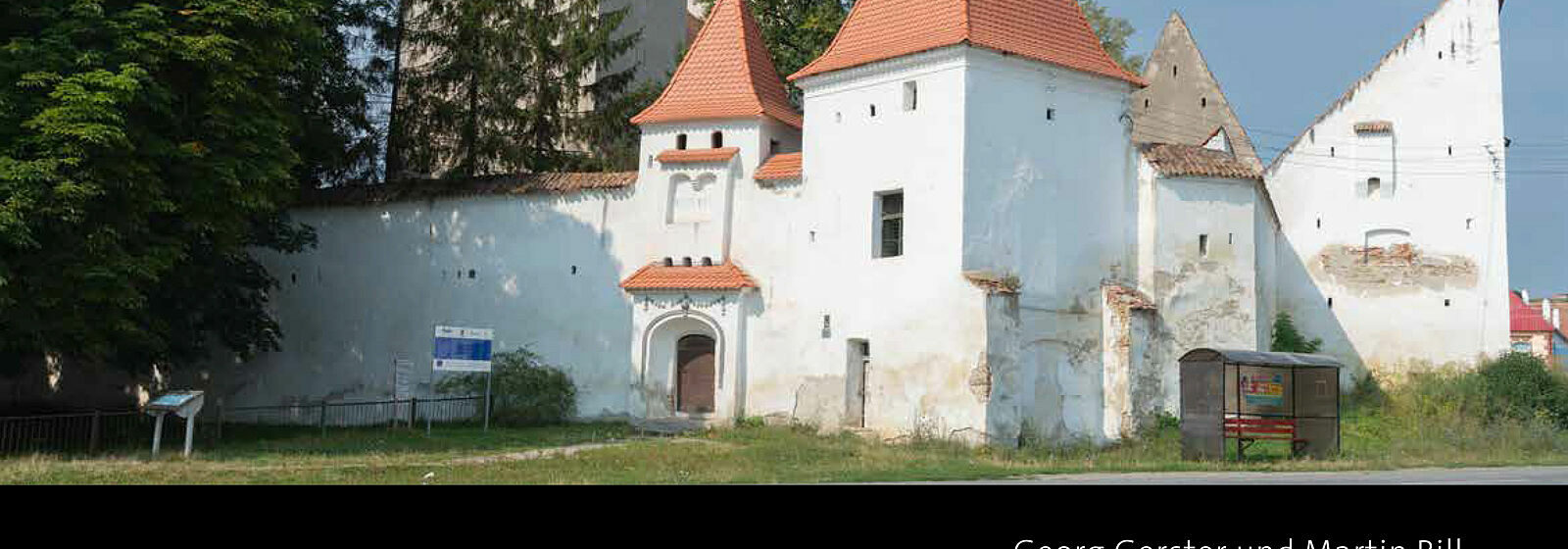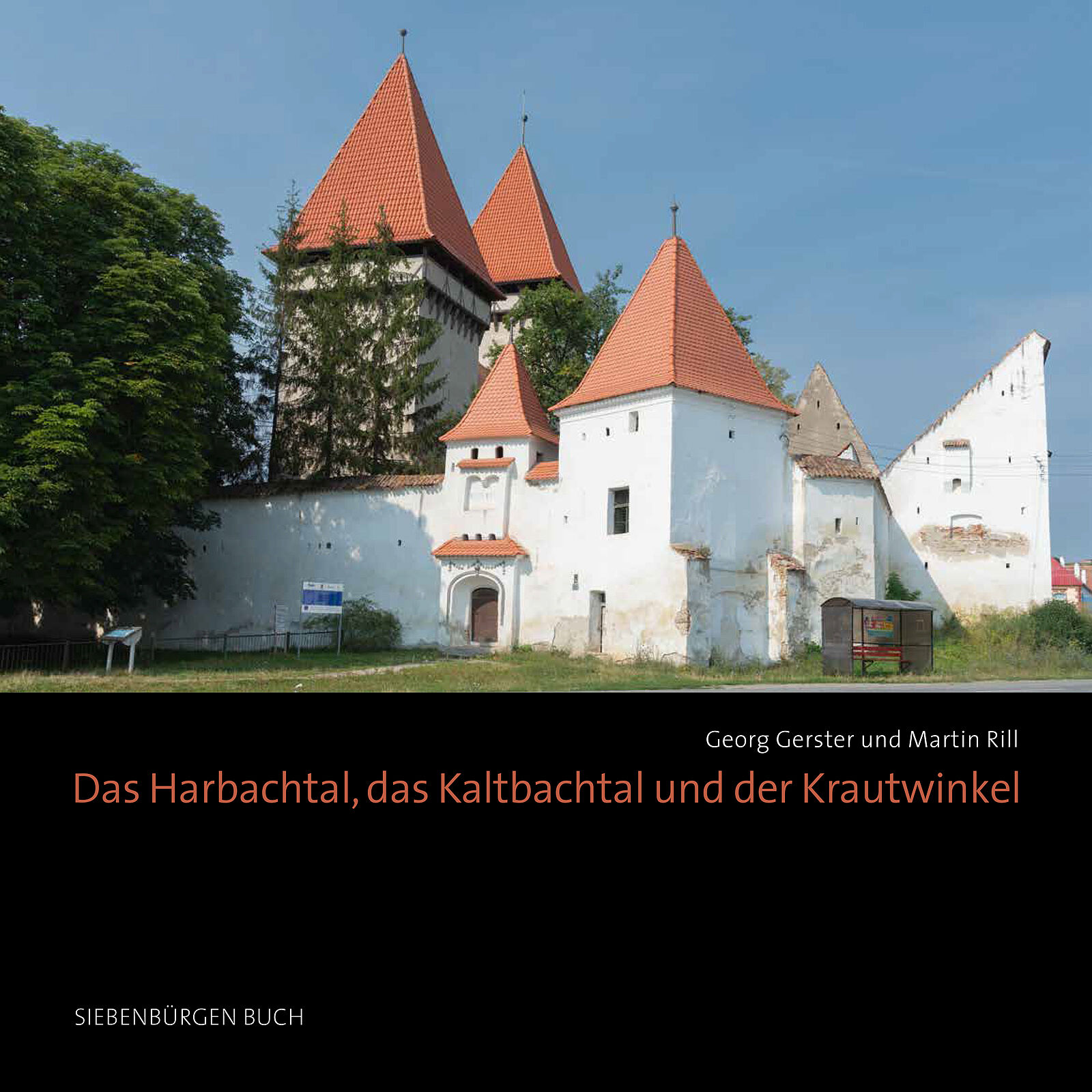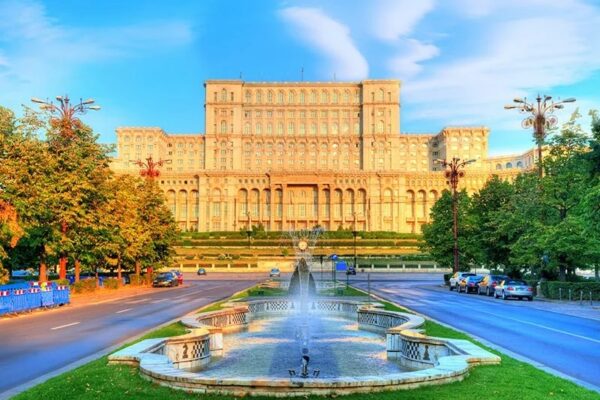
Christmas markets in Romania 2025
17 November 2025
Review: DRS Reisen at the Tourism & Caravanning (TC) Leipzig trade fair
27 November 2025The 336-page hardcover book is available at www.siebenbuergen-buch.de
Focus on Transylvanian heritage
In his 330-page book “Das Harbachtal, das Kaltbachtal und der Krautwinkel” (The Harbach Valley, the Kaltbach Valley, and the Krautwinkel), historian Martin Rill provides a detailed chronicle of these regions and brings together the cultural heritage of the Transylvanian Saxons in a precise work.
The book, which was presented on March 11 at the Bucharest Peasant Museum with speeches by museum director Virgil Ni]ulescu and museologists Ligia Fulga and Ioan Opriș, is the result of years of meticulous research and sheds light on the origins, historical development, cultural assets, and stories of these places. It is supplemented by numerous photographs, maps, and aerial photographs taken in the past from Romanian military helicopters by Georg Gerster. Together, they paint an impressive picture of the region’s landscape and its eventful history.
Meticulousness against forgetting
Martin Rill is a man whose professional journey and passion for history and art history span decades. After graduating from university with degrees in these disciplines, his path led him to the Brukenthal Museum in Sibiu as a research assistant. In this role, Rill was jointly responsible for the preservation and documentation of the region’s cultural heritage. Since then, he has devoted himself to the preservation and research of historical monuments and works of art, particularly the military and sacred architecture of Transylvania.
His motivation for the work he does today in retirement is a deeply rooted conviction: cultural heritage must not be forgotten or allowed to fall into disrepair, but must be preserved and understood for future generations. For him, this is not only a matter of scientific research, but also of making a practical contribution to preservation and restoration.
A race against decay
Rill’s working method is the result of years of meticulous research and documentation. Initially, information was collected in the traditional way with pen and paper, but later the work was expanded to include digital methods and databases. In practice, Rill regularly visits sites to check and document the current condition of the monuments. He records the current state of the buildings and compares it with historical sources.
But the challenges are manifold: often, the fabric of the buildings has been severely damaged by decades of decay and improper repairs. Many of the materials used during the communist era, such as cement plaster, have proven unsuitable because they retain moisture and further damage the masonry. In his work, he uses traditional building methods and collaborates with restorers, craftsmen, and art historians to restore the buildings to their original condition.
There have been many successes, but Rill emphasizes that the process is lengthy and accompanied by setbacks. He is particularly proud of the restoration of fortified churches in places such as Schönberg/Dealu Frumos. Thanks to a combination of technical expertise and the involvement of the local community, numerous monuments have been saved there.
One outstanding example is the fortified church in Schönberg, which also adorns the cover of the volume and was extensively restored between 2010 and 2014 with EU funding. Since 2007, it has also served as a training center for architecture students, who can gain practical experience here. But they are not the only ones to benefit from this historic building: the Schönberg community is committed to preserving and maintaining the fortified church in order to preserve it as a place that fosters a sense of identity for the community.
The impact on the region and its people
Rill’s work not only has architectural value, but also profound social and cultural implications. The local community benefits in many ways from the restoration projects. Particularly noteworthy is how local people increasingly see cultural heritage as part of their identity and living environment. In some regions, village communities are even taking responsibility for maintaining churches and monuments, which helps to strengthen the sense of community.
In addition, Rill’s work is boosting tourism, which has experienced considerable growth in some remote villages. In Schönberg, one of the restored communities, over 14,000 paying visitors were counted last year. This has not only given the economy a boost, but also made cultural heritage a living part of the region.
The financial side
Restoring monuments is a costly undertaking, and Rill has sought funding for these projects in various ways. A large portion of the money comes from the European Union, as many projects are funded as part of the European cultural and heritage program. In addition, there is government funding from the Romanian National Institute for Monuments (INP), which supports the preservation of cultural heritage.
However, Rill emphasizes that despite financial support from public and private foundations, including the German Cultural Foundation and the Fortified Churches Foundation in Sibiu, the funds are often insufficient to cover the enormous effort and costs of a complete restoration. The challenges of financing are compounded by the improper restorations of the communist era, which add to the monuments’ potential for additional, costly repairs.
In addition, it is crucial for Rill that local communities and hometown communities, i.e., former villagers who now live abroad, actively participate in the restoration and maintenance of their historic sites. This networking and social engagement have enabled many projects to continue over the years. However, Rill emphasizes that sustainable preservation continues to depend on ongoing funding in order to protect the monuments in the long term.
Overall, it is clear that Rill’s work not only ensures the preservation of buildings, but also contributes to a stronger connection between people and their cultural heritage, while at the same time leading to the revitalization of regions that have fallen into oblivion due to migration and decay.
With this book, Rill has rendered a significant service to the historiography of the region. It serves not only as a valuable reference work for local history, but also as a testimony to the cultural heritage of the Transylvanian Saxons. It is a work that keeps the history of a region alive and makes it accessible to future generations.
ADZ | Allgemeine Deutsche Zeitung für Rumänien
New illustrated book by Martin Rill presented
By: Vanessa Freihammer










